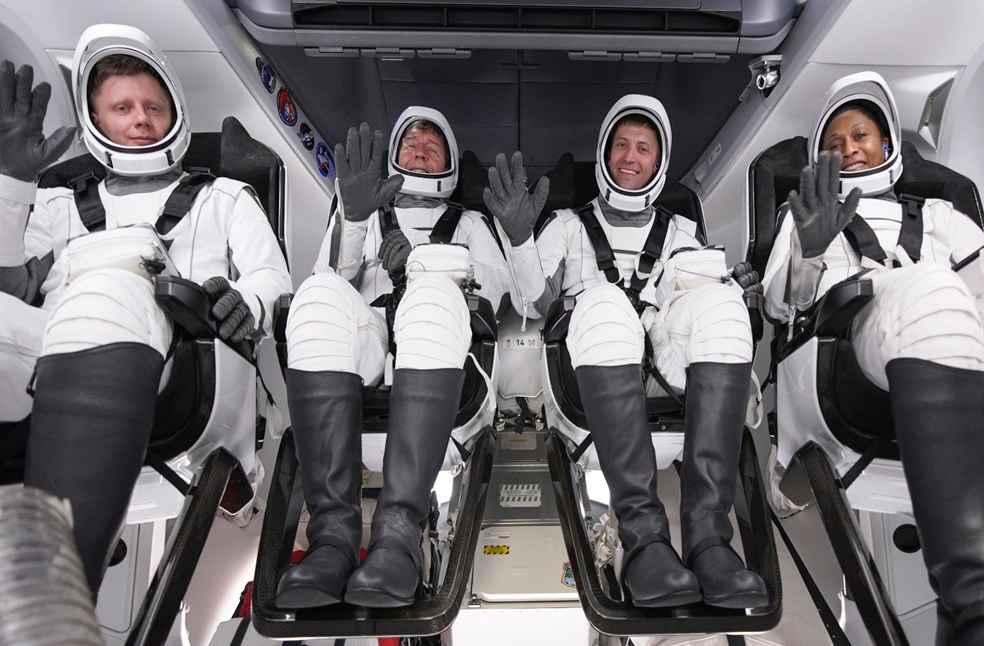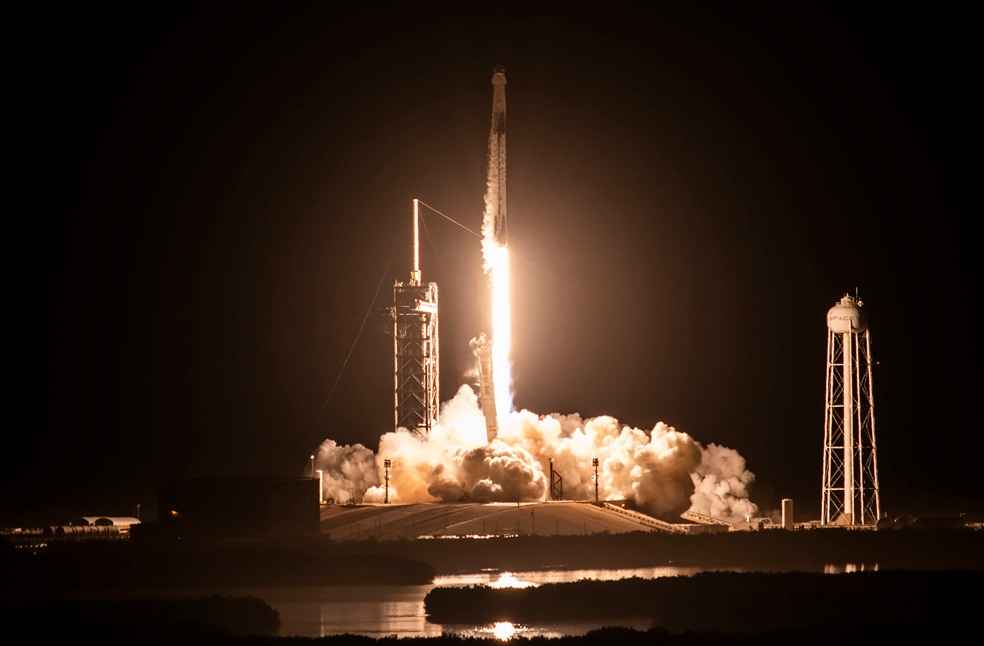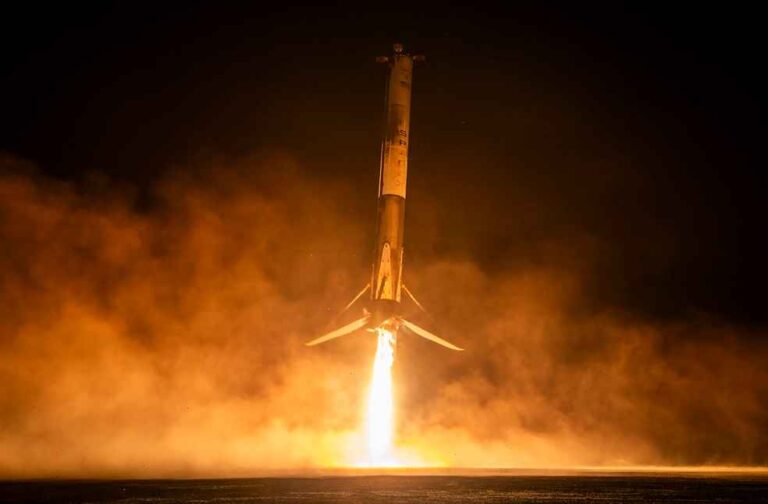United States: The SpaceX rocket has lifted off from Florida carrying three US astronauts and a Russian cosmonaut headed for the International Space Station (ISS) to embark on a six-month science mission in Earth orbit.
A two-stage Falcon 9 rocket, carrying an autonomous Crew Dragon capsule called Endeavor, launched from NASA’s Kennedy Space Center at Cape Canaveral on Florida’s Atlantic coast. The live NASA-SpaceX webcast showed the rocketship rising 25 stories from the takeoff tower, its nine Merlin engines lighting up the night sky in clouds of steam and a red fireball.
During the launch, the rocket consumed 700,000 gallons of fuel per second, according to SpaceX. Nine minutes after liftoff, the Falcon’s upper stage successfully launched Endeavor into its initial orbit. Live video footage from the company showed the four crew members together in white and black flight suits with helmets.

“What an incredible ride to orbit,” exclaimed astronaut Matthew Dominick, aged 42, who was flight commander and one of the three spaceflight novices onboard the capsule. He radioed the control centre outside Los Angeles to express his gratitude to SpaceX. “Really honoured to fly this new-generation spaceship with this new-generation crew,” 64-year NASA veteran Dr. Michael Barratt added.
The four crew members were scheduled to arrive at the International Space Station after a 16-hour flight. They would dock at the orbital laboratory situated about 250 miles (420 kilometres) above Earth.
This mission, known as Crew-8, marks the eighth time NASA has sent a long-duration ISS team aboard a SpaceX launch vehicle since the private rocket venture was founded in 2002 by billionaire Elon Musk. The SpaceX launch vehicle has sent US astronauts to orbit since May 2020.
The latest ISS crew was led by Dominick, a US Navy test pilot making his debut trip to orbit, and Barratt, a physician who has flown to the space station twice previously and completed two spacewalks. Barratt serves as a mission pilot.

Completing the team are NASA astronaut Jeanette Epps, who is an aerospace engineer and a former technical intelligence officer for the CIA, and cosmonaut Alexander Grebenkin, who is a former military aircraft engineer. Like Dominick, Epps and Grebenkin are also new to space travel. The US and Russian space agencies signed a ride-sharing agreement in 2022, and Grebenkin is the latest astronaut to fly on a US spacecraft.
Crew-8 is scheduled to join the space station soon and they will be greeted by seven current ISS occupants, including three Russians and four astronauts from Crew-7, two from NASA, one from Japan, and one from Denmark. The Crew-7 team is expected to depart the space station about a week after Crew-8’s arrival on a flight back to Earth.
The team will stay aboard the space station until the end of August, conducting about 250 experiments in microgravity. The International Space Station, which is about the size of a football field and the biggest human-made object in space, has been constantly driven by a consortium led by the United States and Russia. This consortium also contains 11 European countries, Canada, and Japan.



